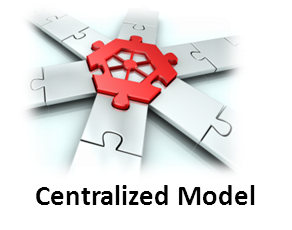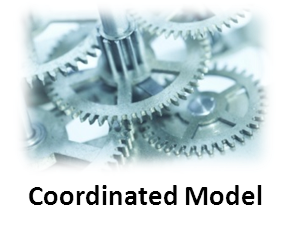Organizational Structure
States creatively organize themselves to achieve and blend the aforementioned core skills required to implement MLTSS programs through the use of internal and external resources. Under both models, the single state Medicaid agency (SSMA) remains the final accountable entity for the MLTSS programs through the use of internal and external resources. Both models also require clear delegation authority from the SSMA to a unit of state government specifying the operational responsibilities for the MLTSS.
We have identified two general organizational models used by states to administer their MLTSS programs.
 |
 |
Click on each model for more information.
The centralized and coordination models differ only in who performs administrative functions, not in what functions are performed. Both models also depend on a central vision and voice for designing and implementing the MLTSS program, whether administrative functions are performed by a single unit or across units. While the coordination model builds on available expertise throughout state government, its effectiveness depends on clear and unambiguous guidance from the MLTSS program director. The centralized model, while administratively simple and straightforward, may be more costly by potentially duplicating existing resources. You will need to consider your goals and current resources to determine which model best suits your state.

